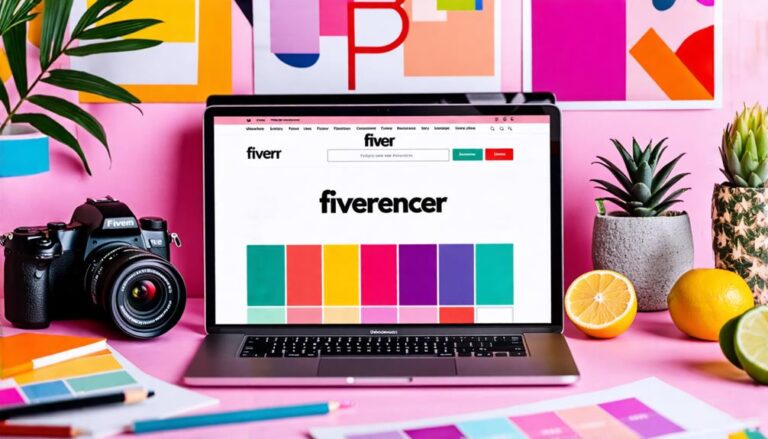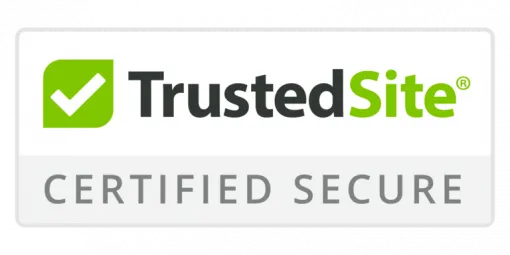You've probably noticed that DIY project blogs have become increasingly popular, with many creators turning their passion into a profitable side hustle. By focusing on a specific niche, such as woodworking or home decor, you can attract a dedicated audience and build a loyal following. As your blog grows, you'll have opportunities to partner with brands and feature sponsored content, which can notably boost your income.
But how do you get started, and what are the key elements of a successful DIY project blog? The path to turning your creative hobby into a lucrative venture begins with an essential first step: understanding how this side hustle works and how to implement it effectively.
- Choose Your Niche: Start by identifying a specific area within the DIY realm that you are passionate about and knowledgeable in. This could be anything from upcycling furniture to creating handmade jewelry. A well-defined niche will help you stand out and attract a particular audience interested in that topic.
- Set Up Your Blog: Create a user-friendly blog using platforms like WordPress, Wix, or Squarespace. Ensure your site is visually appealing and easy to navigate. Invest time in crafting high-quality content that includes detailed tutorials, step-by-step guides, and engaging photos or videos of your projects.
- Build Your Audience: Use social media platforms like Instagram, Pinterest, and YouTube to share your projects and drive traffic to your blog. Engage with your audience by responding to comments and messages, and consider joining DIY-focused online communities to network with like-minded individuals.
- Monetize Through Sponsored Content: As your blog gains traction, reach out to brands that align with your niche for potential partnerships. You can offer to feature their products in your projects or write reviews in exchange for compensation. Be transparent with your audience about sponsored content to maintain trust.
- Diversify Income Streams: Besides sponsored content, you can explore other monetization methods such as affiliate marketing, selling your own DIY kits, or offering online workshops and courses.
By following these steps and consistently producing valuable content, you can successfully turn your DIY project blog into a rewarding side hustle that generates a steady income.
Choose a Niche for Success
Choose a Niche for Success
By focusing on a specific niche, you'll set your side hustle up for success, attracting a dedicated audience and establishing yourself as an expert in a particular area of expertise.
When you specialize in a specific area, you'll appeal to a target audience that's enthusiastic for your unique insights and skills. Niche marketing is key to standing out in a crowded marketplace and building a loyal following.
By concentrating on a specific niche, you'll also be able to create offerings that resonate deeply with your audience, building trust and authority.
Whether you're passionate about graphic design, vintage clothing resale, or personalized fitness coaching, focusing on a specific area will help you differentiate yourself and attract brands looking to partner with influencers in your niche.
Set Up a Professional Website
Creating a professional website is the next essential step in establishing your DIY project blog as a legitimate side hustle, allowing you to showcase your expertise, share your projects, and connect with your target audience.
Start by registering your domain name, which serves as the web address people use to access your site. This is a crucial step in building your brand and making it easy for readers to find you.
Next, choose a website design that's both visually appealing and functional. Consider a clean and modern design that highlights your DIY projects and makes it easy for readers to navigate. You can opt for a pre-made template or collaborate with a designer to create a custom look.
Either way, your website should reflect your brand's personality and style. With a professional website up and running, you'll establish credibility with your audience and attract potential sponsors for your side hustle.
Create Engaging DIY Content
Now that you've set up your professional website, it's time to focus on creating engaging DIY content that'll draw in and retain a loyal audience for your side hustle.
You'll want to come up with enthralling DIY project ideas that resonate with your target market and showcase your creativity.
Captivating DIY Project Ideas
To attract and retain a devoted audience for your side hustle DIY project blog, you'll need to consistently produce engaging project ideas that spark creativity and inspire your readers to take action. Focus on showcasing unique and creative projects that are easy to replicate and can potentially be turned into profitable side hustles, such as upcycling furniture or creating seasonal crafts to sell. Here are some ideas to get you started:
| DIY Project Idea | Description |
|---|---|
| Upcycled Headboard | Transform old pallets or doors into a one-of-a-kind headboard that can be sold online or at local markets |
| Mason Jar Vases | Create beautiful centerpieces using mason jars and seasonal flowers to offer as wedding or event decor |
| DIY Macrame Plant Hanger | Add a bohemian touch to homes with handmade plant hangers that can be sold on Etsy or craft fairs |
| Reclaimed Wood Shelves | Add rustic charm to living spaces with reclaimed wood shelves that are perfect for home decor boutiques |
| Hand-painted Ornaments | Get creative with hand-painted ornaments for personalized holiday decor that can be sold during festive seasons |
Crafting Quality Visual Content
With a solid foundation of enchanting DIY project ideas in place, you'll want to focus on presenting them in a way that truly showcases their potential, which is where high-quality visual content comes in.
By mastering the art of visual storytelling, you'll be able to convey complex ideas in a clear and concise manner, making your content more interesting and accessible to a wider audience. This is particularly crucial for turning your DIY projects into a successful side hustle. To achieve this, you'll need to pay attention to your content aesthetics, ensuring that every image, video, and graphic aligns with your brand's unique style and tone.
Invest in good camera equipment, and learn the basics of photography and editing. Use natural light, and experiment with different angles and compositions to add visual interest to your images.
Consider creating step-by-step tutorials, or time-lapse videos to showcase your DIY projects in action. By doing so, you'll not only enhance your content's visual appeal but also provide a more immersive experience for your audience, setting your DIY side hustle apart from the competition.
Build a Loyal Audience Base
As a DIY project blogger, building a loyal audience base is crucial to the success of your side hustle, and it all begins with creating high-quality content that resonates with your target audience. By consistently producing engaging and informative posts, you'll foster audience engagement and community building – the foundation of a loyal following.
| Content Type | Frequency | Engagement Strategy |
|---|---|---|
| Tutorial posts | Weekly | Ask readers to share their own project experiences |
| Behind-the-scenes stories | Bi-weekly | Encourage comments and questions |
| Product reviews | Monthly | Host a Q&A session on social media |
| Seasonal guides | Quarterly | Collaborate with other DIY bloggers for a roundup post |
| Personal stories | Occasionally | Share user-generated content on social media |
Reach Out to Sponsor Brands
Sponsor brands can be a lucrative revenue stream for your DIY side hustle, and reaching out to them is an essential step in monetizing your influence and audience engagement. By doing sponsorship outreach, you can establish brand partnerships that benefit both parties. You'll promote their products to your loyal audience, and in return, you'll receive financial compensation or other perks.
Don't be intimidated by the idea of reaching out to sponsor brands. Here are some tips to get you started:
- Research brands that align with your DIY niche and values
- Craft a compelling pitch highlighting your audience demographics and engagement rates
- Showcase your past collaborations or successes with other brands
Negotiate Fair Sponsorship Rates
Entering into sponsorship negotiations for your DIY project blog requires a clear understanding of your side hustle's worth.
Calculating a fair rate for your blog's reach and influence is essential, so start by doing thorough market research to understand the going rate for sponsorships in your niche. Knowing your blog's engagement metrics, such as page views, social shares, and comments, is crucial for determining a fair price.
When negotiating sponsorship rates, clearly articulate your blog's value proposition to potential sponsors. Highlight your unique aspects, like your targeted audience and high engagement levels.
Research what other DIY project bloggers with similar metrics are charging for sponsored content. Remember, you're building a side hustle with potential for growth, not just indulging in a hobby.
Don't be afraid to walk away if the offered rate isn't fair.
Disclose Sponsored Content Properly
As you monetize your side hustle blog, it's crucial to disclose sponsored content properly to maintain transparency and comply with regulations.
Clearly label sponsored posts so your audience knows when you're promoting a product or service in exchange for payment or other incentives.
Clearly Labeling Sponsored Posts
Clearly Labeling Sponsored Posts for Side Hustles
Disclose sponsored content properly by clearly labeling every paid post related to your side hustle to maintain transparency with your audience and comply with Federal Trade Commission (FTC) guidelines. This is essential for upholding sponsored content ethics and building audience trust.
Your readers need to know when a side hustle post is sponsored, so they can make informed decisions about the content.
Clearly labeling sponsored posts for your side hustle is simple and straightforward. Here are some tips to get you started:
- Use hashtags like #sponsored, #ad, or #partner to indicate sponsorship.
- Include a clear statement at the beginning of the post, such as 'This post is sponsored by [Brand Name].'
- Use eye-catching graphics or banners to differentiate sponsored content from regular posts.
Transparency in Affiliate Links
Maintaining transparency with your audience is essential when using affiliate links in your side hustle blog posts. Clearly indicating which links earn you commissions not only upholds sponsored content ethics but also ensures compliance with FTC guidelines. Your audience's trust is crucial to the success of your side hustle blog, and being open about affiliate links will build credibility and foster a loyal following. By being transparent, you're demonstrating to your audience that you value honesty and integrity, making them more likely to support your content and click on affiliate links.
| Transparency Strategy | Benefits | Tips for Implementation |
|---|---|---|
| Clearly label affiliate links | Builds trust with audience | Use obvious language, like '[affiliate link]' |
| Disclose sponsored content | Complies with FTC guidelines | Provide clear explanations at the beginning of posts |
| Regularly review and update policies | Upholds affiliate ethics | Stay informed about changes to guidelines and best practices |
Track and Analyze Performance
By closely tracking the performance metrics of your DIY project side hustle, you'll be able to pinpoint what's working, what's not, and make data-driven decisions to boost your online presence and earnings.
You'll gain valuable audience insights that'll help you refine your content strategy, improve user engagement, and increase conversions. With the right analytics tools, you'll be able to monitor your website traffic, social media engagement, email open rates, and more.
Here are some key performance metrics to track:
- Page views and unique visitors: Understand how many people are visiting your site and what content is most popular.
- Bounce rate and time on site: Identify what's keeping visitors engaged and what's causing them to leave.
- Email open rates and click-through rates: Optimize your email campaigns for maximum impact.
Conclusion
You've become a DIY project blog guru, navigating a sea of sponsorships and affiliate links.
Keep your transparency intact and monitor those performance metrics closely.
As you enjoy the success of your side hustle, remember that it all started with choosing a niche, building a loyal audience, and mastering the art of sponsored content.
It may sound simple, but it's a journey worth celebrating.

















































0
View comments